Archive
Rosa Schapire
- Rosa
- Schapire
- 09-09-1874
- Brody (UA)
- 01-02-1954
- London (GB)
- Art Historian
The art historian Rosa Schapire, a supporter of Expressionist art, contributed to the presence of Expressionist art in England with loans and donations from her art collections rescued to London.
Word Count: 30
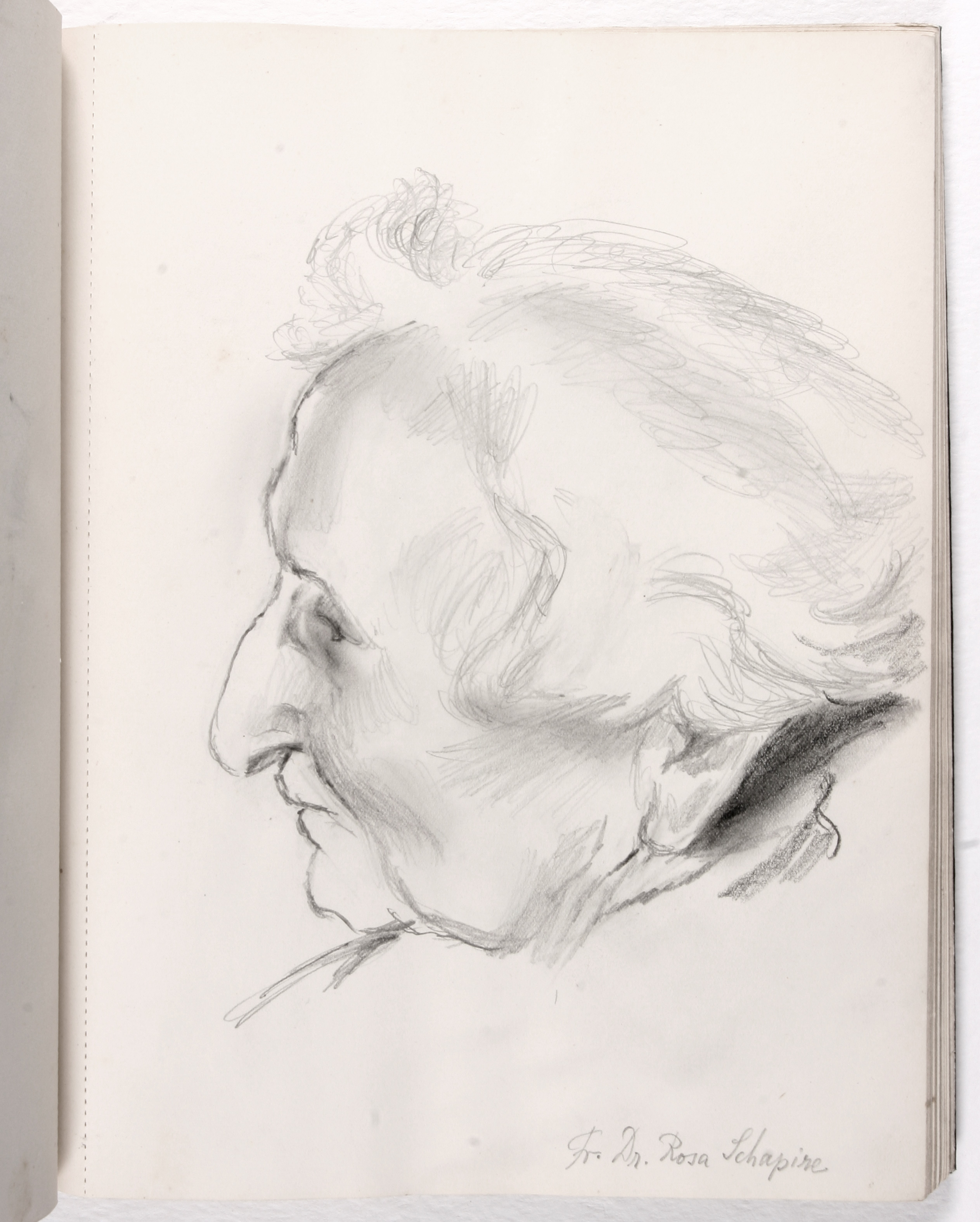
Ludwig Meidner, Portrait of Rosa Schapire, London, 1946, sketchbook 8 July 1945–13 September 1946, pencil on paper, 28 x 21 cm (© Ludwig Meidner-Archiv, Jüdisches Museum der Stadt Frankfurt am Main). 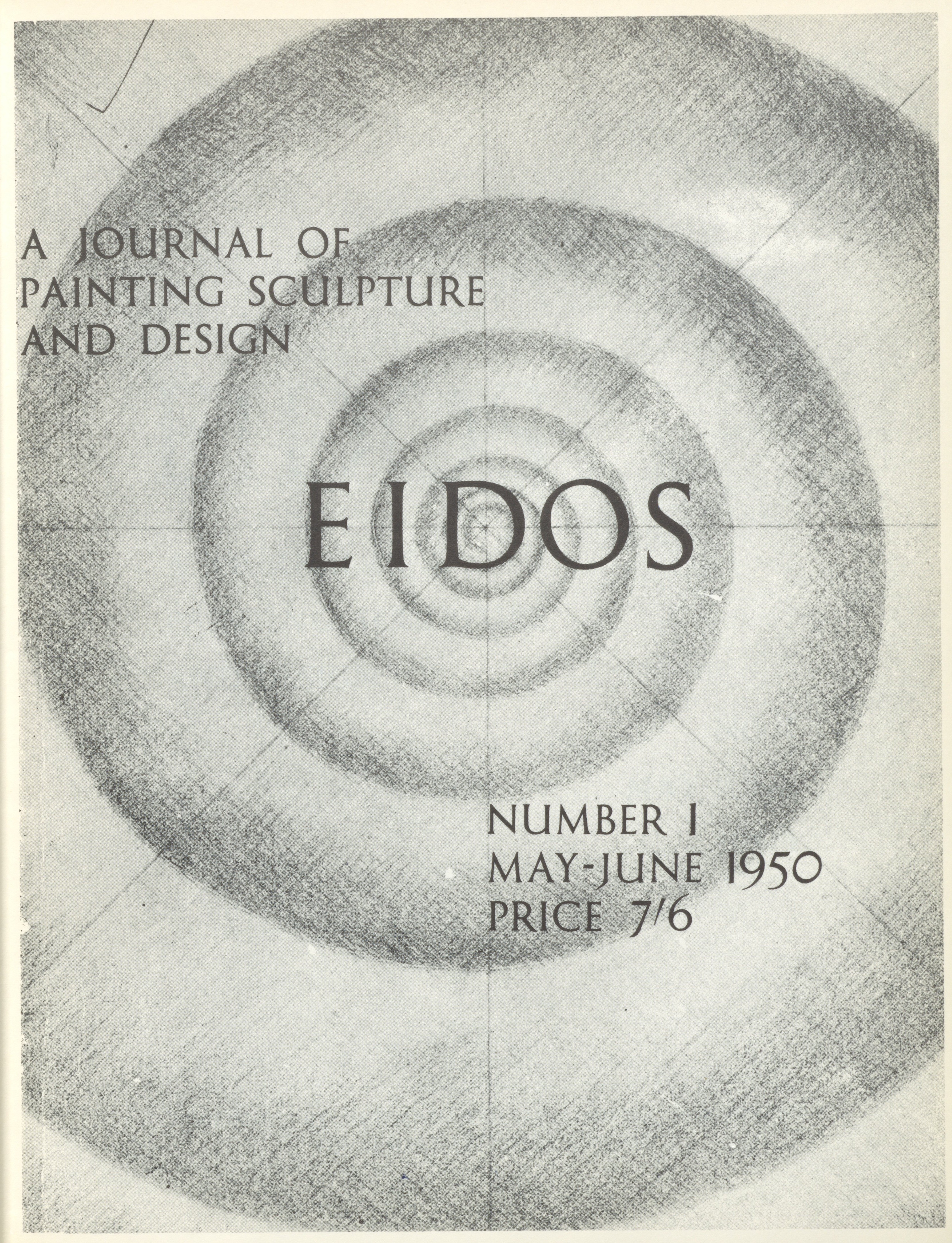
First number of Eidos art magazine with two reviews by Rosa Schapire, no. 1, May–June 1950, cover (Zentralinstitut für Kunstgeschichte, Munich). 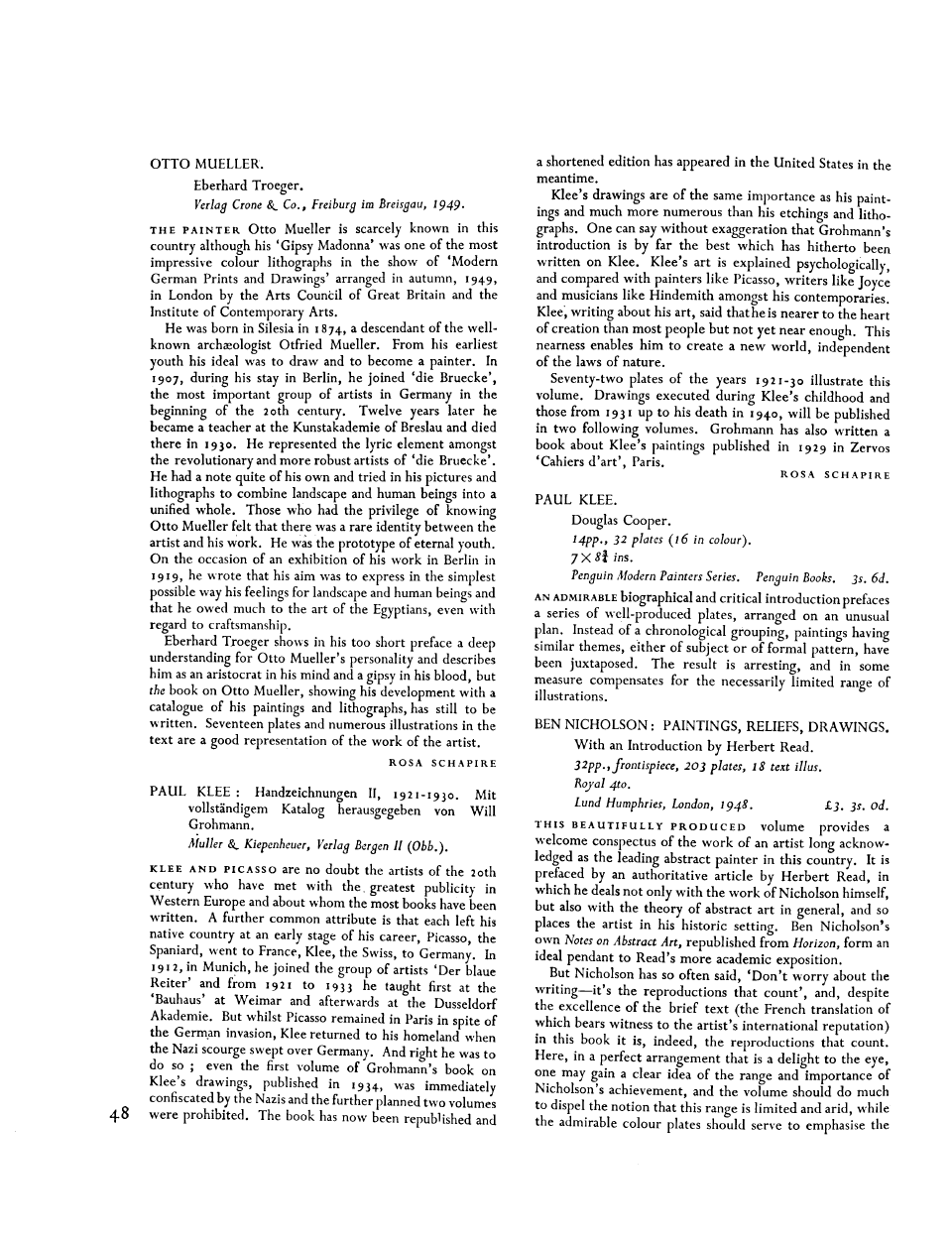
First number of Eidos art magazine with Schapire’s book reviews “Otto Mueller, Freiburg” and “Paul Klee. Handzeichnungen II. 1921–1930, Bergen”, vol. 1, no. 1, May-June 1950, p. 48 (Zentralinstitut für Kunstgeschichte, Munich). 
Rosa Schapire. “Matisse in der Tate Gallery.” Die Weltkunst, vol. 23, no. 4, 1953, p. 11 (Zentralinstitut für Kunstgeschichte, Munich). 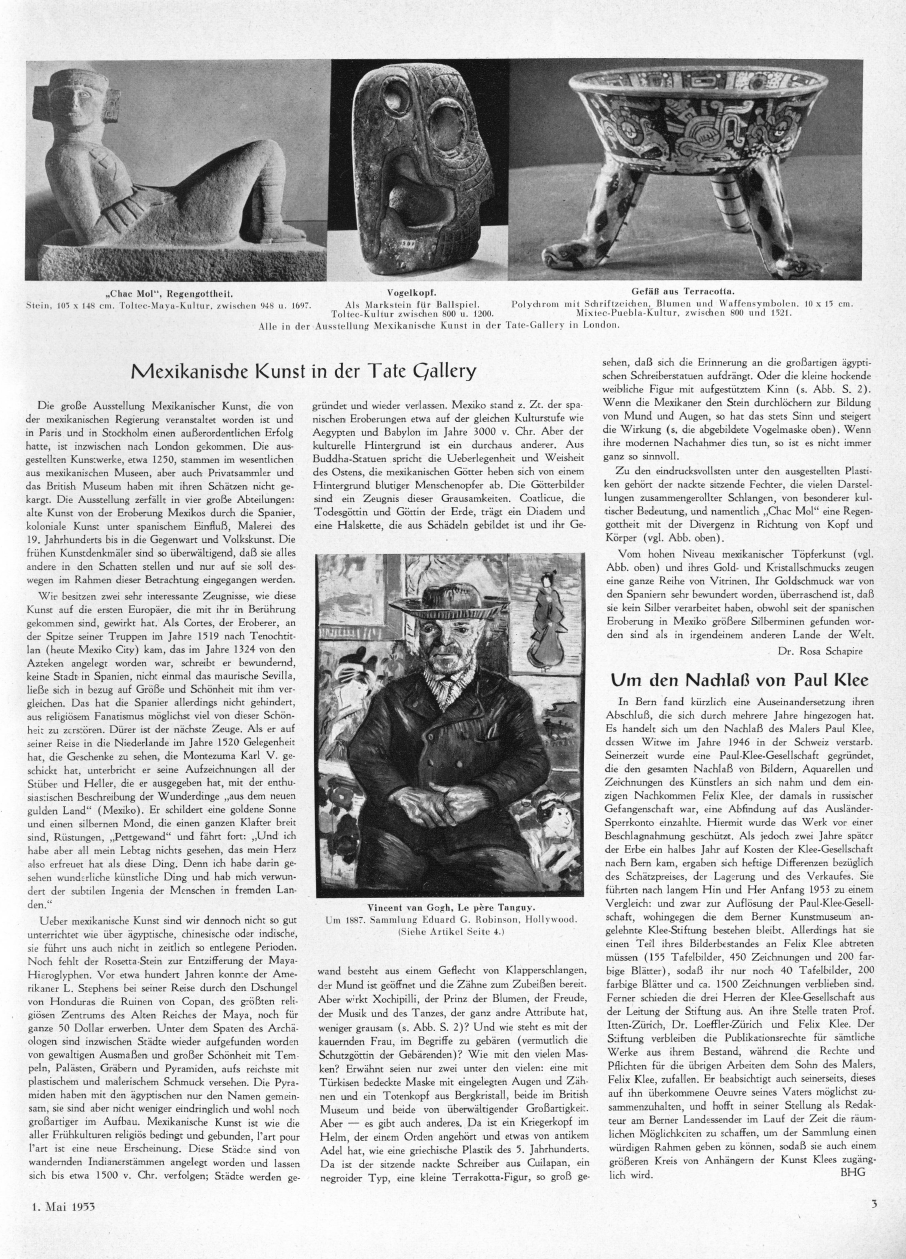
Rosa Schapire. “Mexikanische Kunst in der Tate Gallery.” Die Weltkunst, vol. 23, no. 9, 1953, H. 9, p. 3 (Zentralinstitut für Kunstgeschichte, Munich). 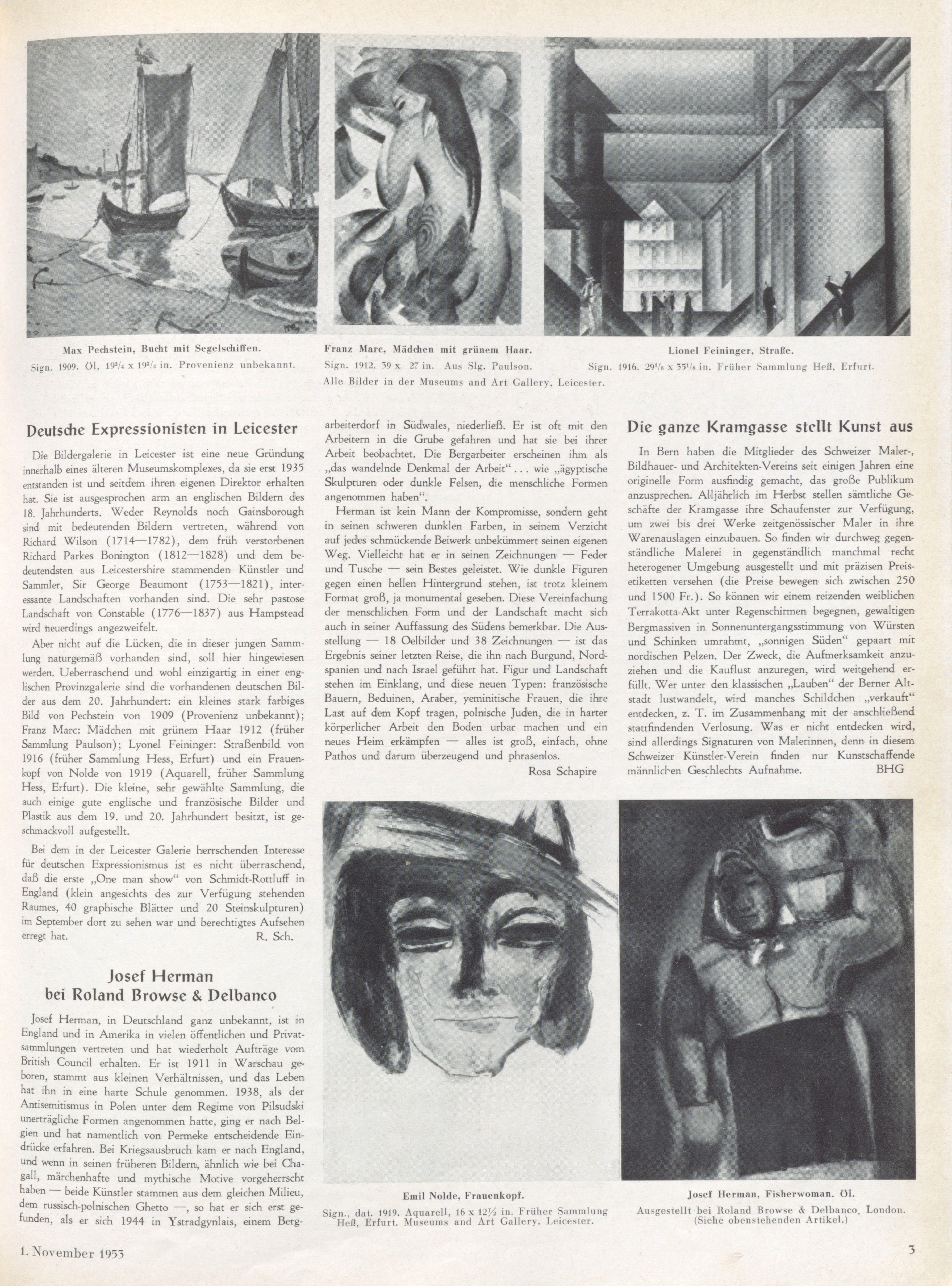
Rosa Schapire’s reviews “Deutsche Expressionisten in Leicester” and “Josef Herman bei Roland Browse and Delbanco” in art magazine Die Weltkunst, vol. 23, no. 21, 1953, p. 3 (Zentralinstitut für Kunstgeschichte, Munich). 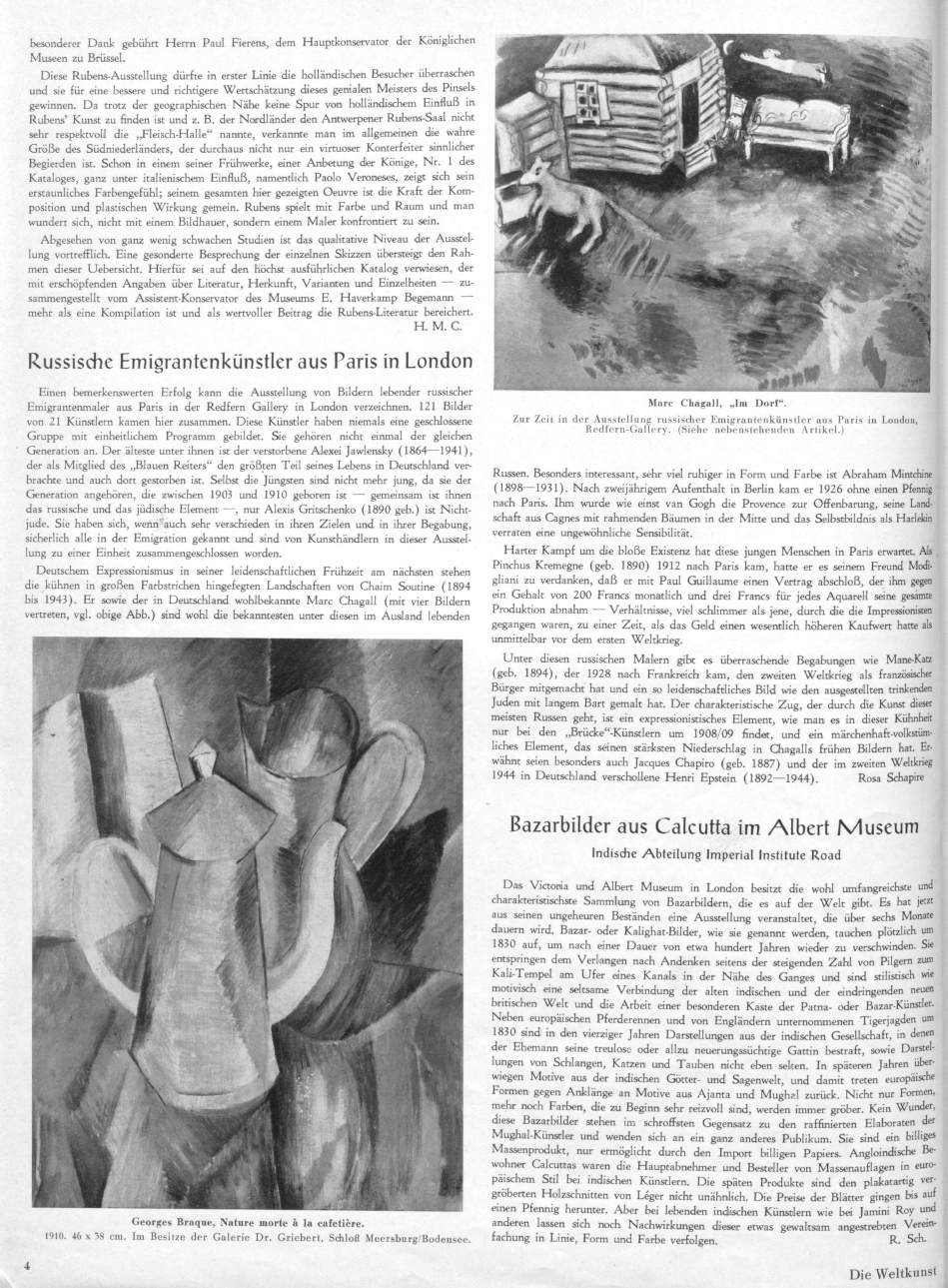
Rosa Schapire. “Russische Emigrantenkünstler aus Paris in London.” Die Weltkunst, vol. 24, no. 2, 1954, p. 4 (Zentralinstitut für Kunstgeschichte, Munich). 
Rosa Schapire’s last published essay “Wall-Paintings in the Alexanderkirche at Wildeshausen” in The Connoisseur, vol. 133, no. 535, 1954, p. 9 (Zentralinstitut für Kunstgeschichte, Munich). Balzac, Honoré de. Vater Goriot. Translated by Rosa Schapire, Rowohlt, 1923.
Behr, Shulamith. “Anatomy of the Woman as Collector and Dealer in the Weimar Period. Rosa Schapire and Johanna Ey.” Visions of the “Neue Frau”. Women and the Visual Arts in Weimar Germany, edited by Marsha Meskimmon and Shearer West, Scolar Press, 1995, pp. 96–107.
Behr, Shulamith. “Dr. Rosa Schapire. Art Historian and Critic in Exile.” Keine Klage über England? Deutsche und österreichische Exilerfahrungen in Großbritannien 1933–1945 (Publications of the Institute of Germanic Studies, University of London, 72), edited by Charmian Brinson et al., Iudicium, 1998, pp. 215–223.
Beiersdorf, Leonie. “‘Wieder Boden unter den Füssen’ – Rosa Schapire in England (1939–1954).” Rosa. Eigenartig grün. Rosa Schapire und die Expressionisten, edited by Sabine Schulze, exh. cat. Museum für Kunst und Gewerbe Hamburg, Hamburg, 2009, pp. 250–281.
Beiersdorf, Leonie. “Zur Bedeutung der Kunstsammlung von Rosa Schapire.” Rosa und Anna Schapire – Sozialwissenschaft, Kunstgeschichte und Feminismus um 1900, edited by Burcu Dogramaci and Günther Sandner, Aviva, 2017, pp. 211–228.
Bruhns, Maike. “Rosa Schapire und der Frauenbund zur Förderung deutscher bildenden Kunst.” Avantgarde und Publikum: Zur Rezeption avantgardistischer Kunst in Deutschland 1905–1933, edited by Henrike Junge, Böhlau, 1992, pp. 269–282.
Chłe̜dowski, Kazimierz. Der Hof von Ferrara. Translated by Rosa Schapire, G. Müller, 1919.
Dogramaci, Burcu. “Still Fighting for Modern Art. Rosa Schapire in England.” Rosa und Anna Schapire – Sozialwissenschaft, Kunstgeschichte und Feminismus um 1900, edited by Burcu Dogramaci and Günther Sandner, Aviva, 2017, pp. 229–256.
Dogramaci, Burcu, and Günther Sandner, editors. Rosa und Anna Schapire – Sozialwissenschaft, Kunstgeschichte und Feminismus um 1900. Aviva, 2017.
Morris, William. Die Geschichte der glänzenden Ebene auch das Land der Lebenden oder das Reich der Unsterblichen genannt. Translated by Rosa Schapire, Seemann, 1902.
Pevsner, Nikolaus. “Rosa Schapire (gest.).” Kunstchronik, vol. 7, no. 4, 1954, pp. 111–112.
Rainbird, Sean. “Andauernde Vernachlässigung – Rosa Schapire und die Rezeption deutscher Kunst des 20. Jahrhunderts in Grossbritannien.” Rosa. Eigenartig grün. Rosa Schapire und die Expressionisten, edited by Sabine Schulze, exh. cat. Museum für Kunst und Gewerbe Hamburg, Hamburg, 2009, pp. 282–299.
Schapire, Rosa. Letter to Agnes Holthusen. Agnes Holthusen Papers (Germanisches Nationalmuseum, Deutsches Kunstarchiv, Nuremberg, 26 December 1949), I, C-9.
Schapire, Rosa. “Paul Ortwin Rave: Kunstdiktatur im Dritten Reich, Hamburg 1949 (review).” Eidos. A Journal of Painting, Sculpture and Design, edited by E.H. Ramsden and Margot Eates, vol. 1, no. 2, 1950, pp. 47–48.
Schapire, Rosa. Letter to Agnes Holthusen. Agnes Holthusen Papers (Germanisches Nationalmuseum, Deutsches Kunstarchiv, Nuremberg, 15 April 1951), I, C-10.
Schapire, Rosa. “Deutsche Expressionisten in Leicester.” Die Weltkunst, vol. 23, no. 21, 1953, p. 3.
Schapire, Rosa. Letter to Agnes Holthusen. Agnes Holthusen Papers (Germanisches Nationalmuseum, Deutsches Kunstarchiv, Nuremberg, 15 January 1954), XR ABK 421.
Schmidt-Rottluff Exhibition. Graphic Works & Stone Carvings, exh. cat. Leicester Museums & Art Gallery, Leicester, 1953.
Vasanta, Parvati. “‘Aber unsere Ziele haben wir höher gesteckt’ – Rosa Schapire und der Frauenbund zur Förderung deutscher bildender Kunst.” Rosa und Anna Schapire – Sozialwissenschaft, Kunstgeschichte und Feminismus um 1900, edited by Burcu Dogramaci and Günther Sandner, Aviva, 2017, pp. 161–174.
Weikop, Christian. “The British reception of Brücke and German Expressionism.” New Perspectives on Brücke Expressionism. Bridging History, edited by Christian Weikop, Ashgate, 2011, pp. 237–276.
Wendland, Ulrike. “Schapire, Rosa.” Idem. Biographisches Handbuch deutschsprachiger Kunsthistoriker im Exil. Leben und Werk der unter dem Nationalsozialismus verfolgten und vertriebenen Wissenschaftler (vol. 2), Saur, 1999, pp. 594–598.
Wietek, Gerhard. “Dr. phil. Rosa Schapire.” Jahrbuch der Hamburger Kunstsammlungen, vol. 9, 1964, pp. 114–160.
Word Count: 529
My deepest thanks go to Erik Riedel from Ludwig Meidner-Archiv at Jüdisches Museum Frankfurt am Main for providing me with the portrait of Rosa Schapire.
Word Count: 26
London, UK (1939–1954).
21 Leinster Square, Bayswater, London W2 (residence, 1945–1947); 20 Barkston Gardens, Kensington, London SW5 (residence, 1947–1950); 5 Kingsbridge Road, Kensington, London W10 (residence, 1951); 19 Bolton Gardens, Kensington, London SW5 (residence, 1951); 74 Hornton Street, Kensington, London W8 (residence, 1953); 31 Nevern Place, Earls Court, London SW5 (residence, 1953).
- London
- Burcu Dogramaci. "Rosa Schapire." METROMOD Archive, 2021, https://archive.metromod.net/viewer.p/69/1470/object/5138-7554315, last modified: 28-04-2021.
-
Herbert ReadArt HistorianArt CriticPoetLondon
The British art historian Herbert Read established himself as a central figure in the London artistic scene in the 1930s and was one of the outstanding supporters of exiled artists.
Word Count: 30
Visual Pleasures from Everyday ThingsBookletLondonVisual Pleasures from Everyday Things is a booklet written in 1946 by the emigrated architectural historian Nikolaus Pevsner with the aim of aesthetic education and teacher training.
Word Count: 26
Ludwig Meidner, Drawings 1920–1922 and 1935–49, Else Meidner, Paintings and Drawings 1935–1949ExhibitionLondonIn 1949, a joint exhibition of works by Ludwig and Else Meidner opened at the Ben Uri Art Gallery. It was the first solo exhibition of the artists in London.
Word Count: 29
Golders Green CrematoriumCrematoriumLondonNumerous emigrants were cremated in Golders Green Crematorium after their death, including the gallerist Alfred Flechtheim, the psychoanalyst Anna Freud, the architect Ernö Goldfinger and the art historian Rosa Schapire.
Word Count: 30
Roland, Browse & DelbancoGalleryArt DealerLondonÉmigré art historians and art dealers, Henry Roland and Gustav Delbanco, along with Lillian Browse, opened their Mayfair gallery, Roland, Browse & Delbanco, in 1945.
Word Count: 24
Marlborough Fine ArtArt GalleryLondonMarlborough Fine Art was founded in 1946 by the Viennese emigrants Harry Fischer and Frank Lloyd in the Mayfair district, focused on Impressionists, Modern and Contemporary Art.
Word Count: 26
The Warburg InstituteResearch InstituteLondonThe Kulturwissenschaftliche Bibliothek Warburg in Hamburg achieved a new presence in London after 1933 under the name The Warburg Institute as a research institution with a library and photo archive.
Word Count: 29
Anna FreudPsychoanalystLondonThe psychoanalyst Anna Freud and her partner Dorothy Burlingham-Tiffany opened the War Nursery research and care facility in Hampstead in January 1941 under the impact of the bombing of London.
Word Count: 29